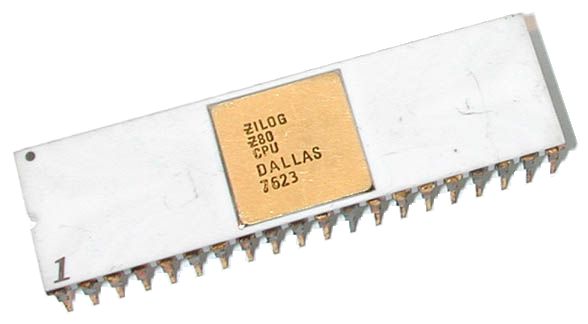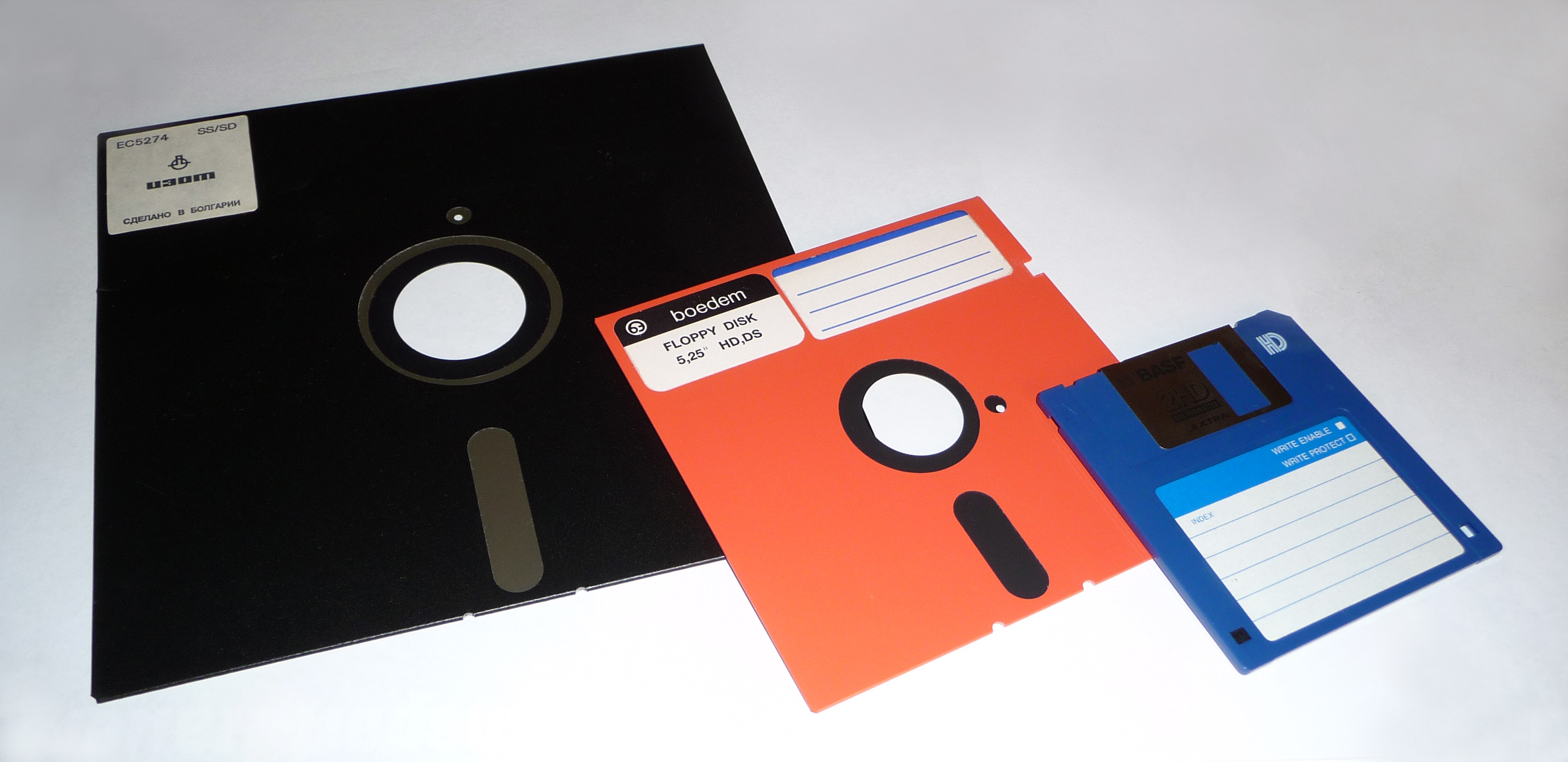|
Gorenje Dialog
Dialog was a microcomputer system developed by Gorenje in 1980s. It was based on the 8-bit 4 MHz Zilog Z-80A microprocessor. The primary operating system was FEDOS (CP/M 2.2 compatible), developed by Computer Structures and Systems Laboratory (Faculty of Electrical Engineering, University of Ljubljana) and Gorenje. There were 3 variants of the Dialog microcomputer system, distinguished only by minor changed: home, laboratory and personal (PC) (in Slovene: hišni, laboratorijski, osebni). Three types of external memory can be connected with Dialog: cassette recorder, floppy drive (5,25" and 8") and hard drive. The home variant of Dialog used resident FEBASIC (a variant of BASIC). References * Mikroračunalnik DIALOG, Tehnično navodilo-uporaba, Gorenje procesna oprema. * FEBASIC, priročnik za uporabnike sistema DIALOG, T. Žitko, Ljubljana, 1985. Microcomputers Gorenje Computer-related introductions in 1985 {{compu-hardware-stub ... [...More Info...] [...Related Items...] OR: [Wikipedia] [Google] [Baidu] |
Gorenje
Gorenje (); stylized as ''gorenje''), is a Slovenian major appliance manufacturer, founded in 1950 by Ivan Atelšek. It is based in Velenje, Slovenia. It is the fourth largest manufacturer of household appliances in Europe. Appliances are sold under the company's own brands ''Gorenje'', ''Mora'', ''Atag'', ''Pelgrim'', ''Etna'', ''Körting'' and ''Sidex'', and are produced in the main production facility in Velenje as well as at the cooking appliances plant ''Mora Moravia'' in Mariánské Údolí (Czech Republic) and at the fridge-freezer plant in Valjevo (Serbia). Since the company’s beginnings in 1950, Gorenje has expanded into a multinational corporation and the Gorenje Group includes 83 subsidiary companies, 59 of which are located outside Slovenia. In addition to household appliances, Gorenje manufactures ceramics, kitchen and bathroom furniture, and provides services in the fields of energy, ecology, and trade. Its products for homes, services, and companies are present ... [...More Info...] [...Related Items...] OR: [Wikipedia] [Google] [Baidu] |
Microcomputer
A microcomputer is a small, relatively inexpensive computer having a central processing unit (CPU) made out of a microprocessor. The computer also includes memory and input/output (I/O) circuitry together mounted on a printed circuit board (PCB). Microcomputers became popular in the 1970s and 1980s with the advent of increasingly powerful microprocessors. The predecessors to these computers, mainframes and minicomputers, were comparatively much larger and more expensive (though indeed present-day mainframes such as the IBM System z machines use one or more custom microprocessors as their CPUs). Many microcomputers (when equipped with a keyboard and screen for input and output) are also personal computers (in the generic sense). An early use of the term ''personal computer'' in 1962 predates microprocessor-based designs. ''(See "Personal Computer: Computers at Companies" reference below)''. A ''microcomputer'' used as an embedded control system may have no human-readable i ... [...More Info...] [...Related Items...] OR: [Wikipedia] [Google] [Baidu] |
CP/M 2
CP/M, originally standing for Control Program/Monitor and later Control Program for Microcomputers, is a mass-market operating system created in 1974 for Intel 8080/ 85-based microcomputers by Gary Kildall of Digital Research, Inc. Initially confined to single-tasking on 8-bit processors and no more than 64 kilobytes of memory, later versions of CP/M added multi-user variations and were migrated to 16-bit processors. The combination of CP/M and S-100 bus computers became an early standard in the microcomputer industry. This computer platform was widely used in business through the late 1970s and into the mid-1980s. CP/M increased the market size for both hardware and software by greatly reducing the amount of programming required to install an application on a new manufacturer's computer. An important driver of software innovation was the advent of (comparatively) low-cost microcomputers running CP/M, as independent programmers and hackers bought them and shared their crea ... [...More Info...] [...Related Items...] OR: [Wikipedia] [Google] [Baidu] |
Zilog
Zilog, Inc. is an American manufacturer of microprocessors and 8-bit and 16-bit microcontrollers. It is also a supplier of application-specific embedded system-on-chip (SoC) products. Its most famous product is the Z80 series of 8-bit microprocessors that were compatible with the Intel 8080 but significantly cheaper. The Z80 was widely used during the 1980s in many popular home computers such as the TRS-80, MSX, Amstrad CPC and the ZX Spectrum, as well as arcade games such as '' Pac-Man''. The company also made 16- and 32-bit processors, but these did not see widespread use. From the 1990s, the company focused primarily on the microcontroller market. The name (pronunciation varies) is an acronym of ''Z integrated logic'', also thought of as "Z for the last word of Integrated Logic". In the oral history interview video which Federico Faggin (co-founder of Zilog) recorded for the Computer History Museum, he pronounced Zilog with a long "i" () consistently. History Zilog wa ... [...More Info...] [...Related Items...] OR: [Wikipedia] [Google] [Baidu] |
Z-80
The Z80 is an 8-bit microprocessor introduced by Zilog as the startup company's first product. The Z80 was conceived by Federico Faggin in late 1974 and developed by him and his 11 employees starting in early 1975. The first working samples were delivered in March 1976, and it was officially introduced on the market in July 1976. With the revenue from the Z80, the company built its own chip factories and grew to over a thousand employees over the following two years. The Zilog Z80 is a software-compatible extension and enhancement of the Intel 8080 and, like it, was mainly aimed at embedded systems. Although used in that role, the Z80 also became one of the most widely used CPUs in desktop computers and home computers from the 1970s to the mid-1980s. It was also common in military applications, musical equipment such as synthesizers (like the Roland Jupiter-8), and coin-operated arcade games of the late 1970s and early 1980s, including ''Pac-Man''. Zilog licensed the Z8 ... [...More Info...] [...Related Items...] OR: [Wikipedia] [Google] [Baidu] |
Microcomputer
A microcomputer is a small, relatively inexpensive computer having a central processing unit (CPU) made out of a microprocessor. The computer also includes memory and input/output (I/O) circuitry together mounted on a printed circuit board (PCB). Microcomputers became popular in the 1970s and 1980s with the advent of increasingly powerful microprocessors. The predecessors to these computers, mainframes and minicomputers, were comparatively much larger and more expensive (though indeed present-day mainframes such as the IBM System z machines use one or more custom microprocessors as their CPUs). Many microcomputers (when equipped with a keyboard and screen for input and output) are also personal computers (in the generic sense). An early use of the term ''personal computer'' in 1962 predates microprocessor-based designs. ''(See "Personal Computer: Computers at Companies" reference below)''. A ''microcomputer'' used as an embedded control system may have no human-readable i ... [...More Info...] [...Related Items...] OR: [Wikipedia] [Google] [Baidu] |
8-bit
In computer architecture, 8-bit integers or other data units are those that are 8 bits wide (1 octet). Also, 8-bit central processing unit (CPU) and arithmetic logic unit (ALU) architectures are those that are based on registers or data buses of that size. Memory addresses (and thus address buses) for 8-bit CPUs are generally larger than 8-bit, usually 16-bit. 8-bit microcomputers are microcomputers that use 8-bit microprocessors. The term '8-bit' is also applied to the character sets that could be used on computers with 8-bit bytes, the best known being various forms of extended ASCII, including the ISO/IEC 8859 series of national character sets especially Latin 1 for English and Western European languages. The IBM System/360 introduced byte-addressable memory with 8-bit bytes, as opposed to bit-addressable or decimal digit-addressable or word-addressable memory, although its general-purpose registers were 32 bits wide, and addresses were contained in the lower 24 bits of thos ... [...More Info...] [...Related Items...] OR: [Wikipedia] [Google] [Baidu] |
University Of Ljubljana
The University of Ljubljana ( sl, Univerza v Ljubljani, , la, Universitas Labacensis), often referred to as UL, is the oldest and largest university in Slovenia. It has approximately 39,000 enrolled students. History Beginnings Although certain academies (notably of philosophy and theology) were established as Jesuit higher education in what is now Slovenia as early as the seventeenth century, the first university was founded in 1810 under the ''Écoles centrales'' of the French imperial administration of the Illyrian provinces. The chancellor of the university in Ljubljana during the French period was Joseph Walland (a.k.a. , 1763–1834), born in Upper Carniola. That university was disbanded in 1813, when Austria regained territorial control and reestablished the Imperial Royal Lyceum of Ljubljana as a higher-education institution. Quest for a national university During the second half of the 19th century, several political claims for the establishment of a Slovene-langu ... [...More Info...] [...Related Items...] OR: [Wikipedia] [Google] [Baidu] |
Cassette Recorder
A cassette deck is a type of tape recorder, tape machine for playing and recording audio compact cassette, cassettes that does not have a built-in power amplifier or speakers, and serves primarily as a Transport (recording), transport. It can be a part of an automotive entertainment system, a part of a portable mini system or a part of a home High fidelity#Modularity, component system. In the latter case it is also called a component cassette deck or just a component deck. A "tape recorder" is a more generic term to identify a device that usually has a self-contained power amplifier and either has a built-in speaker or comes packaged with one. History Origins The first consumer tape recorder to employ a tape reel permanently housed in a small removable cartridge was the RCA tape cartridge, which appeared in 1958 as a predecessor to the cassette format. At that time, reel to reel recorders and players were commonly used by enthusiasts, but required large individual reels and ... [...More Info...] [...Related Items...] OR: [Wikipedia] [Google] [Baidu] |
Floppy Drive
A floppy disk or floppy diskette (casually referred to as a floppy, or a diskette) is an obsolescent type of disk storage composed of a thin and flexible disk of a magnetic storage medium in a square or nearly square plastic enclosure lined with a fabric that removes dust particles from the spinning disk. Floppy disks store digital data which can be read and written when the disk is inserted into a floppy disk drive (FDD) connected to or inside a computer or other device. The first floppy disks, invented and made by IBM, had a disk diameter of . Subsequently, the 5¼-inch and then the 3½-inch became a ubiquitous form of data storage and transfer into the first years of the 21st century. 3½-inch floppy disks can still be used with an external USB floppy disk drive. USB drives for 5¼-inch, 8-inch, and other-size floppy disks are rare to non-existent. Some individuals and organizations continue to use older equipment to read or transfer data from floppy disks. Floppy disks ... [...More Info...] [...Related Items...] OR: [Wikipedia] [Google] [Baidu] |
Hard Drive
A hard disk drive (HDD), hard disk, hard drive, or fixed disk is an electro-mechanical data storage device that stores and retrieves digital data using magnetic storage with one or more rigid rapidly rotating platters coated with magnetic material. The platters are paired with magnetic heads, usually arranged on a moving actuator arm, which read and write data to the platter surfaces. Data is accessed in a random-access manner, meaning that individual blocks of data can be stored and retrieved in any order. HDDs are a type of non-volatile storage, retaining stored data when powered off. Modern HDDs are typically in the form of a small rectangular box. Introduced by IBM in 1956, HDDs were the dominant secondary storage device for general-purpose computers beginning in the early 1960s. HDDs maintained this position into the modern era of servers and personal computers, though personal computing devices produced in large volume, like cell phones and tablets, rely ... [...More Info...] [...Related Items...] OR: [Wikipedia] [Google] [Baidu] |
.jpg)





.jpg)

